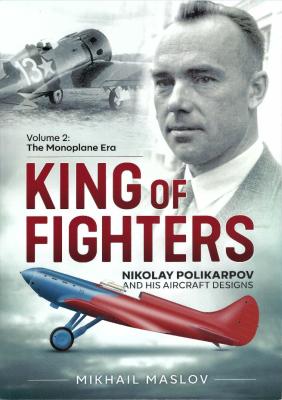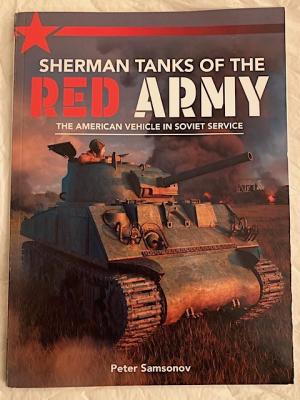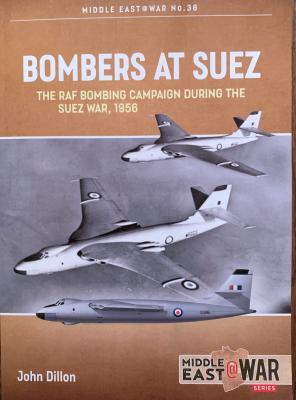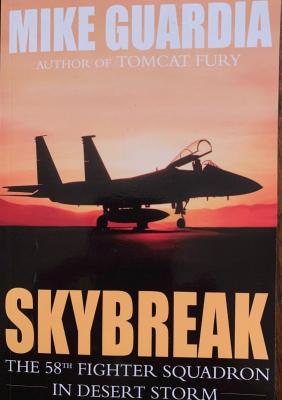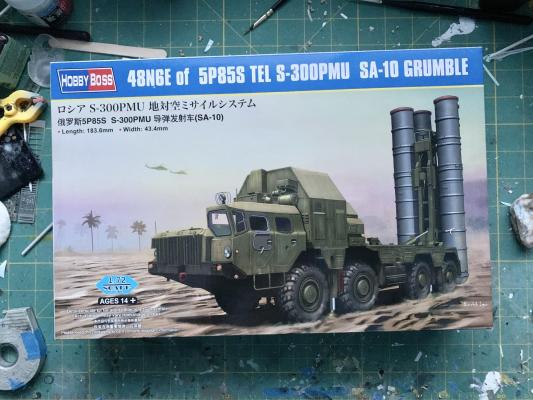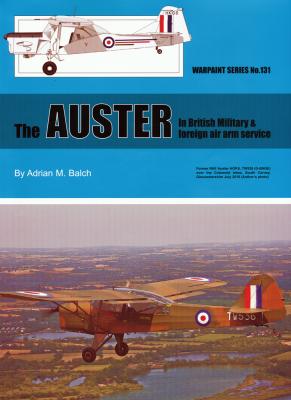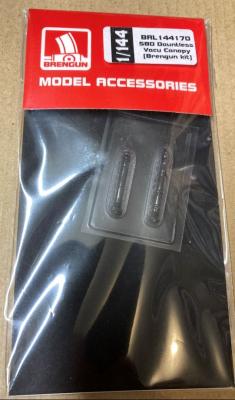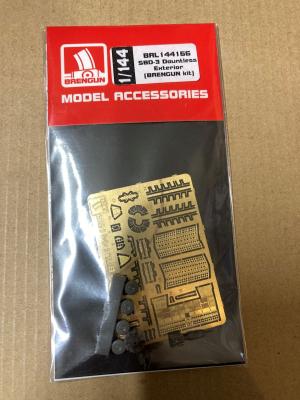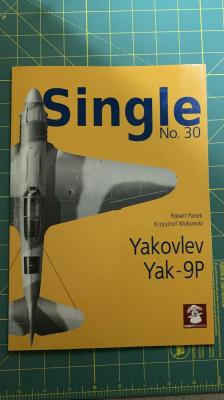Mikhail Maslov was born in 1954 in Mary, Turkmenistan, at that time a part of the Soviet Union. His aviation career started during his school years when he became interested in aviation history and began building aircraft models. Mikhail graduated from the Moscow Aviation Institute (University) and worked as an engineer at the Tupolev Design Bureau, participating in the development of the Tu-204 airliner, and later at the Central Aero and Hydrodynamics Institute (TsAGI) as researcher. However, his passion for aviation history prevailed and in 1992 he transferred to the TsaGI museum in Moscow where he began his historical research. Since the beginning of the 1990s Mikhail has been actively involved in the restoration of Soviet aircraft to flying condition, and has participated in building I-153, I-16, MiG-3 and Po-2 planes.
What's New
When the words “Sherman tank” are uttered, the first thing that comes to mind for many of us in the US, is Patton’s 3rd Army fighting German Tiger tanks in Northern Africa or his columns of armor racing through Europe after D-Day. The Sherman tank played a role much broader than this and Samsonov has done a very good job explaining the Soviet introduction to, evaluation of, and eventual combat use of the Sherman.
Like any good book, this one gets you thinking beyond generalities. I, for one, was surprised that there was feedback and even some pushback from recipients of armor under the Lend Lease Act. Evidently more than a few people who were fighting back against Germany were not thinking that something is better than nothing. To my surprise, I discovered that the Sherman tank underwent significantly more extended trials by our allies than I had ever imagined, and rightfully so.
The book is volume 38 of Helion & Company’s Middle East@War series and looks at the participation of RAF’s medium and heavy bombers in Operation Musketeer, the Suez War of 1956. The book includes over seventy black and white photographs and seven pages of color profiles depicting the markings of some of the Canberra and Valiant squadrons that participated in the campaign and aircraft of the Egyptian Air Force, along with several maps and order of battle charts.
John Dillon is a former Vulcan navigator and the author of several military history books.
An often-overlooked part of the Suez War of 1956 is the participation of the Royal Air Force’s Canberra medium bombers and Valiant heavy bombers in the campaign. Based in Malta and Cyprus these aircraft were tasked with neutralizing the Egyptian Air Force in order to prevent it from interfering in the eventual assault that was planned to take back control of the Suez Canal.
Mike Guardia is a veteran of the United States Army and the author of a number of military history books. His most recent book, Skybreak takes a look at the operations of the 58th Fighter Squadron of the United States Air Force during Desert Shield and Desert Storm.
Following Iraq’s invasion of Kuwait in the fall of 1990, the 58th Fighter Squadron was one of the many USAF units deployed in support of Operation Desert Shield – the coalition effort to deter further aggression by Iraq – and eventually Operation Desert Storm, the coalition campaign to forcefully remove Iraqi forces from Kuwait.
Flying the newest version of the F-15C Eagle, the 58th was tasked with protecting coalition aircraft from interference by Iraqi Air Force aircraft. During the air campaign the F-15s of the 58th downed 16 Iraqi aircraft ranging from MiG-29s to Su-22s without a loss.
Notes: Missiles not included, only canisters. Instructions are vague on stencil placement. This kit would make a great introduction to armor kits.
First deployed by the Soviet Union in 1979, the S-300 (NATO reporting name: SA-10 Grumble) is a Russian long-range surface to air missile system designed to counter aircraft and cruise missiles. Over the years, the system had evolved to intercept ballistic missiles as well. Regarded as one of the most potent anti-aircraft missile systems currently fielded, it is mostly used in Russia, Asia, and Eastern Europe, though it is also in use by three NATO members: Bulgaria, Greece and Slovakia. In 2007, the S-400 (NATO reporting name: SA-21 Growler), an evolved version was introduced. The S-300 system is basically the Russian answer to the US Patriot missile system.
Helion is a UK based company that produces books on many aspects of Military History from the Late Medieval period through to the present day. Helion was established in 1996, and since then they have published almost 1,200 books, with 100 or more new titles coming out every year, for readers around the world.
A native Texan, Linda was born in Del Rio. Linda retired from the U. S. Government in 1997, after being employed in various occupations during her 33 years Civil Service career, in which she worked in various locations, including the Laughlin AFB, Charleston Naval Base, USAF HQ Europe, Wiesbaden, Germany, NASA, and the Internal Revenue Service in Houston. She has previously written Flight of the Dragon, detailing the story of Chang-di ‘Robin’ Yeh, a Taiwanese U-2 pilot, and Remembering the Dragon Lady, first-person memoirs of many of the pilots, specialists and family members who supported the early US spy-plane projects.
Auster Aircraft started in 1938 as Taylorcraft Aeroplanes (England) license building the eponymous US manufacturer’s light aircraft. During WWII, the company built over 1,600 high-wing Taylorcraft Auster air observation aircraft for the British armed forces, and in 1946, changed their name to Auster Aircraft. Based at Rearsby Aerodrome in Leicestershire, the company continued to develop incrementally the basic high-wing monoplane design, eventually building a total of over 3,800 aircraft for both military and civilian usage worldwide. Auster Aircraft was bought out by the new BEAGLE company in 1960.
One other little detail Brengun does well is VACFORM canopies for their models. In this case, you get two types of canopy closed or open.
Use a REALLY new #11 blade, ceramic since the old style won’t do anything but bend. Use your favorite cementing method. I use blue-light clear cement, it works great and doesn’t cloud the plastic.
I painted the canopy with acrylic, and then used a toothpick to clean up the old man brush painting squiggles… it worked great. and the new canopy was better than the two-scale feet thick model original, the better to show off the detail I could not paint into place.
Brush painting the model seemed best (for me) and I didn’t have too many problems. Glosscoat, decals, and install the prop and spinner.
Highly recommended for future surgeons, and Brengun once again succeeds! Thanks again Brengun for the review items!
Think SMALL. Then realize PE really does a good job of upgrading one of these kits.
Thanks to BRENGUN for providing (once again) a couple of great upgrades for our use. IPMS USA Sincerely appreciates your support!
The subject of this review is the 24 part PE upgrade set for Brengun’s own SBD-3, along with engine, main bomb, four wheel/tire assemblies, and a challenge to the small builder’s eyesight. I had the basic kit, in a moment of insanity thinking “nice size”. Then I realized it was really small. Almost too small. But Brengun, being experts at this figured out a solution.
That solution being an upgrade set for their own kit!
PE flaps/dive brakes, resin bomb body and PE details for same, Wheels and tires for both land and sea (A-24 and SBD) versions, and a detailed engine.
The MMP Single Series books are a collection of books that focus on an individual subject. These books include line drawings, period detail pictures and color panels showing sample camouflage and markings. The 30th book in the series covers the Yakovlev Yak-9P.
The Yak-9P was the last and most advanced version of the Yak-9s being produced in 1946. At this time, the manufacturing of high strength aluminum alloys had been established in the Soviet Union, simplifying aircraft manufacturing and increasing service life. Unlike the previous model it incorporated all metal wings with elliptical tips.

